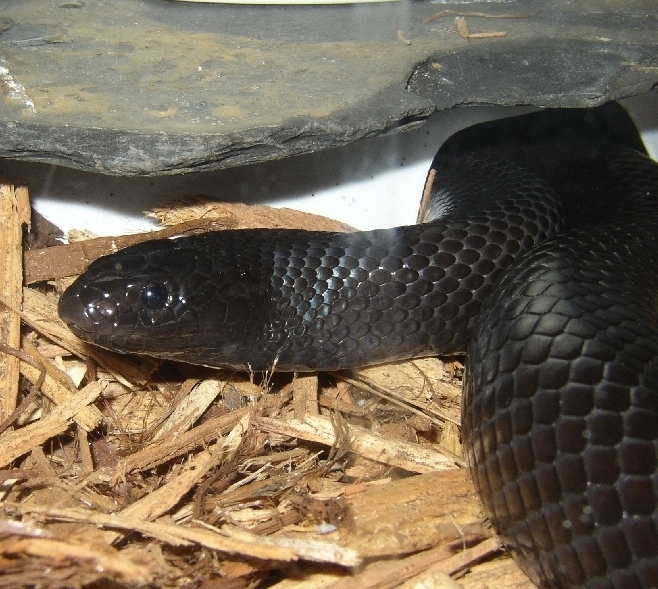|
Black Mexican Kingsnake (Lampropeltis getula nigrita) - Wiki
| 제목: | Black Mexican Kingsnake (Lampropeltis getula nigrita) - Wiki
| |

| 해상도: 658x589
파일크기: 338711 Bytes
등록시간: 2007:08:14 15:25:30
|
Lampropeltis getula nigrita
From Wikipedia, the free encyclopedia
The Black Mexican King Snake or Lampropeltis getula nigrita is a non-venomous reptile of the colubrid family. Adults are nearly solid black although juveniles may have very small speckles of white or yellow under their chins which fade with age. Its scales resemble black patent leather. They average 3-4 feet in length but 5 feet is not unheard of. Their range is Sonora, Mexico and Sinaloa, Mexico to a few areas of Arizona. They are quite docile and make good pets for anyone entering the field of snake keeping. They eat rodents, frogs, toads, lizards and other snakes both venomous and non-venomous.
http://en.wikipedia.org/wiki/Lampropeltis_getula_nigrita
| The text in this page is based on the copyrighted Wikipedia article shown in above URL. It is used under the GNU Free Documentation License. You may redistribute it, verbatim or modified, providing that you comply with the terms of the GFDL. |
|
^o^
동물그림창고 똑똑전화 누리집
^o^
|
|